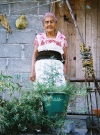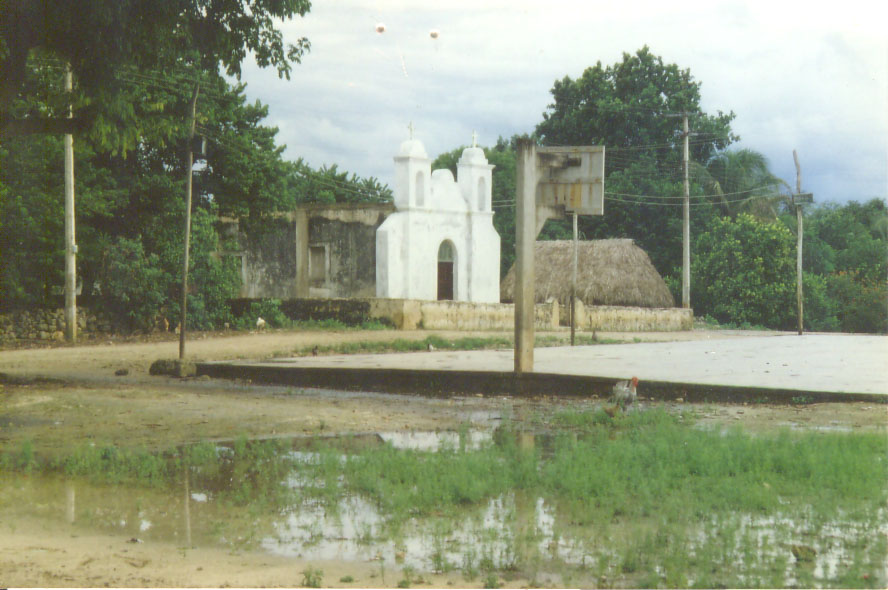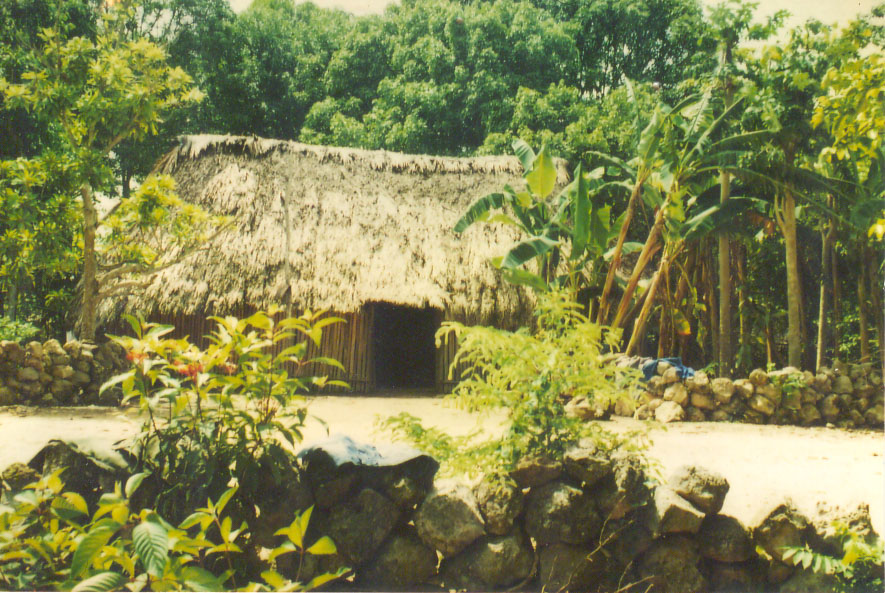Spatial language and cognition in Mesoamerica
Chol
Cora
Cora is a Southern Uto-Aztecan language spoken in Northwest Mexico by
around 17, 000 thousand speakers. The data used in this research Project
comes from the Meseño dialect of Cora spoken in the
towns of Presidio de los Reyes and Santa Cruz del Guaybel. Meseño Cora is an
SOV language with a nominative-accusative alignment. It has several sets of clitics and one set of prefixes for marking subject. As a
primary object language, it has only one set of prefixes for marking primary
object. Morphological causatives are very productive as well as periphrastic
ones. The system of applicatives is also very
productive since there are few postpositions in the language. Complex
sentences are characterized for being finite, and relative clauses are
adjoined similar to the Australian type, although in Cora they do not have
the adverbial reading. This feature has lead to the
fact that Cora is one of the non-configurational
languages of Mesoamerica. It does have depictive predicates, middle voice,
and it has an innovation for marking plural in inanimates
nouns very different from the strategies of the other Uto-Aztecan languages
in the Southern area. It is well known for having several locative prefixes
that are pervasive in the verb, it lacks the category of adjectives as a
lexical word class. These two features, the pervasive system of locative
prefixes and the lack of adjectives, as well as the a great deal of cognates
in the lexicon, are shared by Huichol, a sister
language that forms the corachol branch of
Uto-Aztecan. Huave
The Ombeayiüts language (Huave) is one of the languages spoken in the Pacific
coast of Oaxaca, in the municipality of San Mateo del Mar. It is a language
isolate that has an absolute reference system that are known in the western
world as North, South, East and West. This implies a system of coordinates
with fixed points of location, that can take into account the point of view
of the person and its location, although it doesn't depend on them. This
situation is evident in the language, manifested in the system of
codification used for spatial location. Another use of the system of
reference is related directly with deictics of
place used in specific contexts. For instance, in a context in which someone
is given the order to go to their room, the sentence is: ¡kalüy Jose! North José The only
interpretation in this context is ‘José, go to your room!’. It i implied that it means the room, since it is located
north (kalüy) respect of José (both the room and
José located south of the speaker). In the case of meronyms, the language has mainly
terms for body parts; these terms can be used to name parts of objects in a
metaphoric extension that can be applied to small things, like a bottle or
big things, like a mountain. Unlike the Indo-European languages in which
there are metaphorical extensions of use of body parts on objects parts, in Huave there is a global system of mapping between body
parts and object parts. Huehuetla Tepehua
Huehuetla Tepehua (Totonacan langauge family) is a moribund language that is spoken by
fewer than 1,500 people in Huehuetla, Hidalgo and Mecapalapa, Puebla, which are located in the northeast of
Mexico. The term Tepehua is an exonym of Nahuatl origin. The Huehuetla Tepehua speakers call
themselves Maqalhqama', and they call
their language Lhiimaqalhqama'. Tepehua is a polysynthetic, head-marking language with
complex morphology that is both prefixing and suffixing. The basic word order
tends towards VSO and SVO, but varies depending on clausal pragmatics. Though
there is a reference grammar of Hueuetla Tepehua that describes its phonology, morphology, morphosyntax, and syntax (see Kung, A descriptive
grammar of Huehuetla Tepehua,
PhD dissertation in linguistics, University of Texas at Austin, 2007) the language
remains largely under-documented.
Ayutla Mixe
Ayutla Mixe is a Mixe-Zoque language
spoken in Southern Mexico, in the state of Oaxaca. Even though Ayutla Mixe can be regarded as
one of the six dialects of South Highlands Mixe
-one of the three languages of the proper Mixe
branch- each community constitutes the locus of linguistic interaction and it
is arguable that each community has a different linguistic system. How
different all of the South Highlands Mixe dialects
are from each other and even from other Mixe
languages is still an unknown matter given the scarce documentation of these
languages.
Pajapan Nawat
Otomi
P'orhepecha (Tarasco)
Tarascan or P’orhépecha is an isolate language spoken in the
northwest of Michoacán, México. It is an agglutinating and dependent-marking
language with morphological case of the nominative-accusative type, and
Primary Object constructions. Most of Tarascan’s
lexical roots are verb roots from which words functioning as nouns and
nominal modifiers are constructed. There is a set of classificatory
verb roots that convey information about form and position of objects.
These roots blend with a rich system of spatial suffixes of (lexical
affixes) in order to allow the localization of objects in space. Q'anjob'al
Seri
The Seri
people, or as they refer to themselves, Comcáac,
‘the People’, live along the northern coast of the Sea of Cortez in Sonora,
Mexico. As of 2000 (Gordon, 2005), there were about 800 inhabitants of the Comcáac territory. San Lucas
Quiaviní Zapotec
San Lucas Quiaviní Zapotec (SLQZ) is a member of the Central (or
Valley) Zapotec dialects. The language is spoken in San Lucas Quiaviní, a
community under the jurisdiction of the municipio
of Tlacolula, in the central valleys region of the
southwestern Mexican state of Oaxaca. It is also spoken by the growing SLQ
sister community in the Los Angeles, CA area. SLQZ, as other Zapotec
languages, is VSO; in its phonology, it exhibits fortis/lenis
consonantal distinction, complex vowel phonation and tone. Of particular
interest to the MesoSpace project is the use of body-part derived terms in spatial
description. Soteapanec
Sumu
Tecpatán Zoque
Tzeltal
Yucatec
Maya
Yucatec is
the largest member of the Yucatecan branch of the
Mayan language family. It is spoken by approximately 760,000 people in the
Mexican states of Campeche, Quintana Roo, and Yucat‡n, and approximately 5,000 in the Cayo District of Belize (Ethnologue
2005). Yucatec is the language whose autodenomination, Maya, has been adapted by scholars to
name the Mayan language family. Dr. Bohnemeyer has
worked extensively on the expression of spatial, temporal, and causal
relations and on argument structure and lexical aspect in Yucatec.
Go to Linguistics Department |



